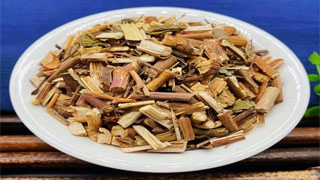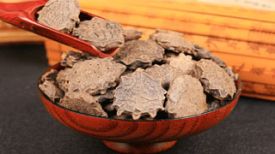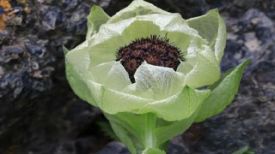
1. Aliases
Strong Wind Cold Grass, Red Flower Wild Sesame, Roadside Tip, Bone Melting Pill, Wild Sesame, Wild Mint, Bee Seed Grass, Mountain Scrolled Lotus, Wild Schizonepeta, Yellow Stable Bubble
2. Plant morphology
Upright subshrubs, 15-70 centimeters tall. Often from the base of some branches, the branches are square, densely covered with gray white downward curved pubescence. Single leaf opposite; Petiole length 0.2-1.5 centimeters; The leaves are papery, ovate to long ovate, 1.5-4 centimeters long and 1-3 centimeters wide. The apex is gradually pointed, the base is wide cuneiform, and the edges have regular serrations. Both sides are covered with pubescence and glandular dots, and the back is particularly dense. Cymes axillary, peduncle usually 3-flowered, occasionally 1 or 5-flowered; Petiole with conical small bracts; Calyx campanulate, 5-lobed, lobes lanceolate, both sides covered with pubescence and glandular dots; Corolla purple red to light red, apex 5-lobed, 2-lipped, lobes entire, middle lobe of lower lip larger, circular, outside covered with sparse pubescence and glandular dots; Stamens 4, extending beyond the corolla tube along with the style; The apex of the ovary is pilose. After the capsule ripens, it has four split petals, and the petals are inverted in an oval shaped boat shape. The surface is densely covered with rough hairs and concave convex network patterns. The flowering and fruiting period is from June to September.
3. Origin distribution
Born on slopes, plains, ditches, and riverbanks at an altitude of 550-2600 meters. Distributed in Hebei, Shanxi, Jiangxi, Hubei, Sichuan, Yunnan, Shaanxi, Gansu and other places.
4. Harvesting and processing
Harvest from July to August, wash, sun dry or use fresh.
5. Characteristics of medicinal herbs
In June, the stems of cold medicinal herbs were covered with white soft hairs, and the tender branches were quadrilateral. Leaves opposite each other. Widely ovate, approximately 3 centimeters long and 2.5 centimeters wide, with rough serrations at the edges, covered with white pubescence, and petioles approximately 7 millimeters long. Cyme axillary, calyx campanulate, corolla light purple red, 5-lobed, symmetrical on both sides, upper 4 lobes equal, bottom 1 larger, and with purple red spots. Fresh and tender stems and leaves are preferred.
6. Nature, taste, and meridian tropism
Mild in nature, with a spicy and slightly bitter taste. Gui Lung Meridian.
7. Effect and function
Soothing the wind and relieving the exterior, promoting lung function and relieving cough. Xin Wen Jie Biao Yao belongs to the classification of Xin Wen Jie Biao Yao.
8. Clinical applications
Internal administration: decoction, dosage 10-15 grams. External use: tamping and applying; Or adjust and apply at the end of the study. Indications: Cold, cough, whooping cough, external obstruction of vision, water and fire burns.
9. Pharmacological research
It has a cardiotonic effect.
10. Chemical composition
The whole plant contains glycerides: palmitic acid-1-glycerides; Triterpenes: Oleanolic acid; Flavonoids: Robinia pseudoacacia extract and rhamnoside; Iridoid glycosides; Sterols: stigmasterols, carotenoids; Fatty alcohols; Thirty two alkanol; Fatty acids: Tetradecanoic acid.
11. Taboos for use
It is not yet clear.
12. Compatibility prescription
① Treatment for external cold cough: 15 grams of cold in June, 9 grams each of Wupifeng, Lung Meridian Grass, Wind Cold Grass, and Rabbit Ear Wind. Boiled in water. (Chinese Herbal Medicine in Wanxian County)
② Treating ulcerated lymph node tuberculosis: Take an appropriate amount of fresh leaves from roadside branches, mash them and apply white sugar externally; Or dry leaf powder, mixed with Vaseline. (Shaanxi Chinese Herbal Medicine)
The content of the article is for clinical reference only. Non professionals in traditional Chinese medicine are not allowed to try medication.


